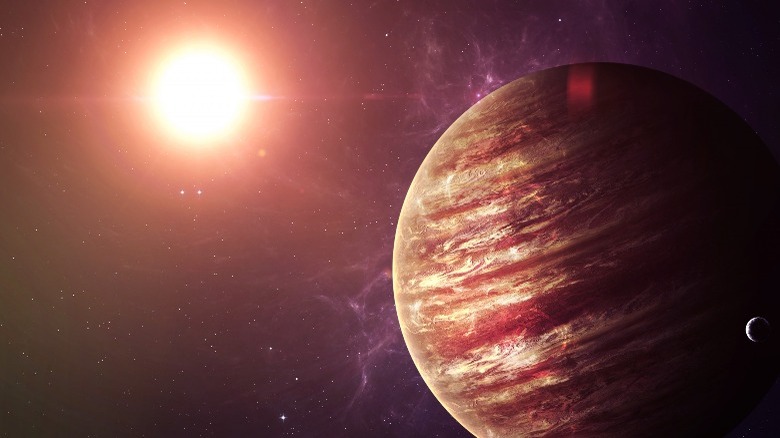Jupiter's Near-Twin Found In Old Kepler Telescope Data
How many planets exist in the Milky Way galaxy? This is the all-compelling question for the team of astronomers deciphering old data collected by the Kepler Space Telescope, a spacefaring telescope that once observed distant sections of the Milky Way galaxy for previously undiscovered exoplanets between 2009 and 2018. So abundant was the data Kepler collected over its near-decade of service that researchers have continued to make new discoveries well after the craft was retired from service.
A new study conducted by an international group of researchers worked with Kepler data to turn up a previously unknown planet that was a near-twin of our own gas giant Jupiter. As it turns out, some planets can look exactly like other planets and even occupy the same orbit in their respective solar systems, no matter how far apart they were formed in the vacuum of space.
This newly-revealed planet was discovered over 17,000 light-years away from Earth, which also makes it the most distant planet the Kepler Telescope has ever discovered. Scientists have given the planet the name K2-2016-BLG-0005Lb. For the record, the most distant exoplanet we know of is called SWEEPS-4 b, a gas giant 3.8 times the size of Jupiter, located 27,723 light-years away from Earth. SWEEPS-4 b was discovered in 2006.
How was Jupiter's twin discovered?
The newly discovered K2-2016-BLG-0005Lb is the most distant exoplanet the Kepler Telescope discovered during its voyage (that we know of so far), but it's not the most distant space object that scientists have discovered by alternate processes.
Distant objects in space are generally discovered using one of five different processes. The aforementioned SWEEPS-4 b planet was found using a method called "transit," which means we could make out its general shape, distance, and composition by observing its transition in front of the respective star it orbits. The amount of time it takes, the amount of light it occludes, and the color of the light it reflects can clue astronomers in on a lot of valuable information.
Researchers used a vastly different method — called gravitational microlensing — when they uncovered K2-2016-BLG-0005Lb. It's a more complex method that also allows for the discovery of planets based on how they "warp the fabric of space," as NASA puts it.
The vast potential of a new model
With gravitational microlensing, scientists observe subtle shifts in the light's direction as distant objects magnify a star's light via gravitational pull. Scientists can then capture these quick magnification events, but since they have to rely on quick blips of light rather than longer transition periods, it can be more challenging to find new planets than it's been using more traditional methods. Only 130 exoplanets have been discovered using microlensing, whereas 3,846 planets have been discovered by observing their transit around a star.
Kepler data wasn't originally captured with gravitational microlensing in mind. K2-2016-BLG-0005Lb was uncovered by researchers studying data from Campaign 9 of the Kepler K2 mission (K2C9) with a binary microlens model cross-referenced with associated studies. This method has the potential to reveal new planets and other space anomalies in not only newly collected data but in data collected in the distant past, long since abandoned by traditional research methodologies.
The challenges that come with microlensing in space research are far outweighed by the potential in the new data it can uncover. This could be the start of a long line of discoveries that might otherwise have gone completely unnoticed.


